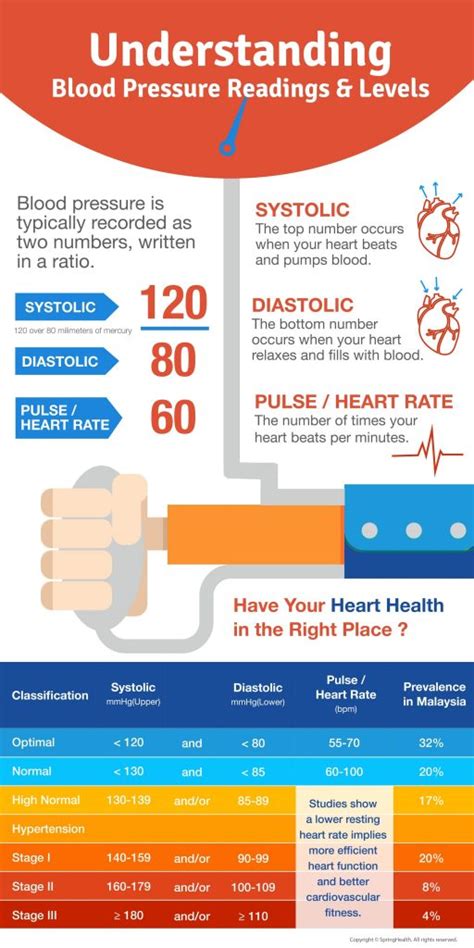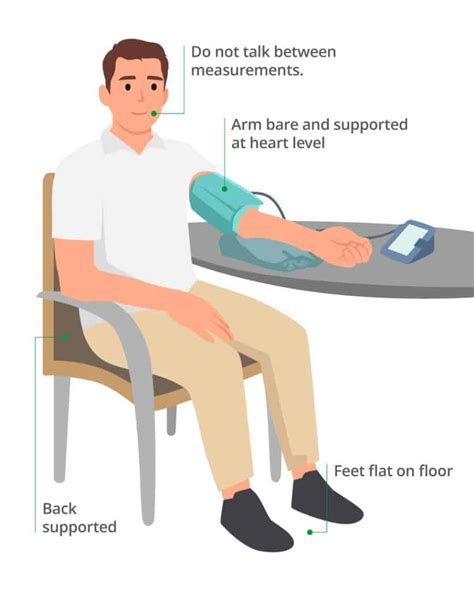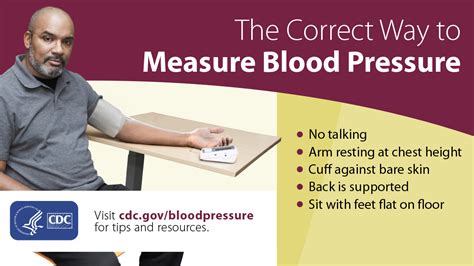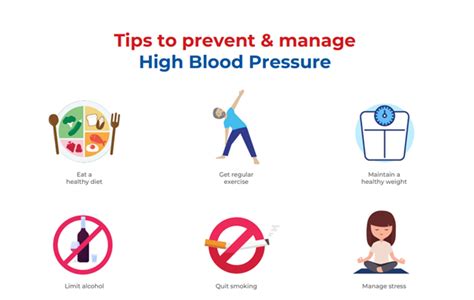Intro
Monitor your health with easy blood pressure checks, using digital BP monitors, and learn about hypertension, systolic, and diastolic readings for a healthy lifestyle.
Monitoring blood pressure is a crucial aspect of maintaining overall health, as high blood pressure can lead to severe complications such as heart disease, stroke, and kidney disease. The good news is that checking blood pressure has become easier and more convenient than ever. With the advancement of technology, individuals can now check their blood pressure from the comfort of their own homes, without the need for frequent visits to the doctor's office. This ease of monitoring has encouraged more people to take an active role in their health, allowing for early detection and management of blood pressure-related issues.
Regular blood pressure checks can help individuals identify potential problems before they become severe. By being proactive about monitoring blood pressure, individuals can work with their healthcare providers to develop strategies for managing and reducing their blood pressure. This can include making lifestyle changes such as improving diet, increasing physical activity, and reducing stress. For those already diagnosed with hypertension, regular monitoring can help track the effectiveness of treatments and make necessary adjustments.
The importance of blood pressure monitoring cannot be overstated. It provides valuable insights into cardiovascular health, allowing for timely interventions that can significantly improve outcomes. Whether you're looking to prevent high blood pressure or manage existing conditions, understanding how to check blood pressure easily and accurately is the first step towards taking control of your health. With the variety of options available, from manual to digital devices, there's never been a better time to start monitoring your blood pressure regularly.
Understanding Blood Pressure

To appreciate the ease of checking blood pressure, it's essential to understand what blood pressure is and how it's measured. Blood pressure is the force of blood pushing against the walls of arteries as it circulates throughout the body. It's measured in millimeters of mercury (mmHg) and is expressed as two numbers: systolic pressure (the top number) and diastolic pressure (the bottom number). The systolic pressure measures the pressure in the arteries when the heart beats, while the diastolic pressure measures the pressure when the heart rests between beats. A normal blood pressure reading is typically around 120/80 mmHg, though this can vary slightly from person to person.
Factors Affecting Blood Pressure
Several factors can influence blood pressure readings, including physical activity, stress levels, certain medications, and even the time of day. It's also important to consider lifestyle factors such as diet, alcohol consumption, and smoking, as these can have a significant impact on blood pressure over time. Understanding these factors can help individuals interpret their blood pressure readings more accurately and make informed decisions about their health.Methods for Checking Blood Pressure

There are several methods for checking blood pressure, ranging from traditional manual sphygmomanometers to automated digital devices. Manual devices require a stethoscope and some training to use accurately, whereas digital devices are generally easier to use and provide quick, accurate readings. Some digital devices can also store previous readings, allowing users to track changes in their blood pressure over time. Additionally, there are wearable devices and mobile apps that can monitor blood pressure throughout the day, providing valuable insights into how different activities and situations affect blood pressure.
Choosing the Right Device
When selecting a device to check blood pressure, it's crucial to choose one that is accurate and easy to use. Look for devices that have been clinically validated and meet international standards for blood pressure measurement. Consider the cuff size, as using a cuff that is too small or too large can lead to inaccurate readings. It's also helpful to read reviews and consult with a healthcare provider to find the best device for your specific needs.How to Check Blood Pressure Accurately

Checking blood pressure accurately requires attention to a few key details. First, ensure you're sitting comfortably with your back supported and your feet flat on the floor. Avoid crossing your legs or ankles, as this can affect blood flow. Next, place the cuff on your bare arm, making sure it's at the same level as your heart. Take a few deep breaths to relax, and then take your reading. It's recommended to take multiple readings at different times of the day to get a comprehensive picture of your blood pressure.
Tips for Accurate Readings
- Avoid smoking, exercise, and caffeine for at least 30 minutes before taking a reading. - Ensure the cuff is the right size for your arm. - Take readings at the same time each day to track patterns. - Keep a record of your readings to share with your healthcare provider.The Role of Technology in Blood Pressure Monitoring

Technology has revolutionized the way we monitor and manage blood pressure. Smart blood pressure monitors can connect to smartphones and tablets, allowing users to track their readings over time and share them easily with healthcare providers. Some devices can even provide personalized recommendations for improving blood pressure based on the data collected. Mobile apps offer additional tools, such as reminders to take medication, dietary advice, and stress management techniques, all aimed at helping individuals better manage their blood pressure.
Benefits of Digital Monitoring
- Convenience: Check blood pressure from anywhere, at any time. - Accuracy: Digital devices reduce human error, providing reliable readings. - Tracking: Easily monitor changes in blood pressure over time. - Sharing: Quickly share readings with healthcare providers for more effective management.Managing High Blood Pressure

For those diagnosed with high blood pressure, managing the condition requires a comprehensive approach. Lifestyle changes are often the first line of defense, including adopting a healthier diet, increasing physical activity, reducing alcohol intake, and quitting smoking. In some cases, medication may be prescribed to help lower blood pressure. Regular monitoring is crucial to ensure that the management plan is working effectively and to make any necessary adjustments.
Lifestyle Changes for Better Blood Pressure
- **Dietary Changes:** Focus on consuming fruits, vegetables, whole grains, and lean proteins. The DASH diet is often recommended for its effectiveness in lowering blood pressure. - **Physical Activity:** Aim for at least 150 minutes of moderate-intensity exercise, or 75 minutes of vigorous-intensity exercise, or a combination of both, per week. - **Stress Reduction:** Engage in stress-reducing activities such as meditation, yoga, or deep breathing exercises.Conclusion and Next Steps

In conclusion, checking blood pressure easily and accurately is within reach for everyone. By understanding the importance of blood pressure monitoring, choosing the right device, and making a few simple lifestyle changes, individuals can take significant steps towards improving their cardiovascular health. Whether you're looking to prevent high blood pressure or manage existing conditions, the key is to stay informed, stay proactive, and work closely with your healthcare provider.
Final Thoughts
The journey to better blood pressure management begins with a single step: taking control of your health. By embracing the ease and convenience of modern blood pressure monitoring, you're not just tracking numbers; you're investing in a healthier, happier you. So, take that first step today, and discover the difference that proactive health management can make.What is considered high blood pressure?
+High blood pressure, or hypertension, is typically defined as a systolic pressure of 130 mmHg or higher, or a diastolic pressure of 80 mmHg or higher.
How often should I check my blood pressure?
+The frequency of checking blood pressure depends on your individual health status. If you have hypertension, your healthcare provider may recommend daily or weekly checks. For those without hypertension, occasional checks, such as during annual health exams, may be sufficient.
Can lifestyle changes alone lower blood pressure?
+Yes, lifestyle changes such as improving your diet, increasing physical activity, reducing alcohol consumption, and managing stress can significantly lower blood pressure. For some individuals, these changes may be enough to manage hypertension without medication.
We hope this article has provided you with valuable insights into the world of blood pressure monitoring and management. If you have any further questions or would like to share your experiences with checking blood pressure, please don't hesitate to comment below. Your feedback and stories can help others on their journey to better health. Additionally, if you found this information helpful, consider sharing it with friends and family who might benefit from learning more about blood pressure management. Together, we can promote a culture of proactive health care and support each other in our quests for wellness.
